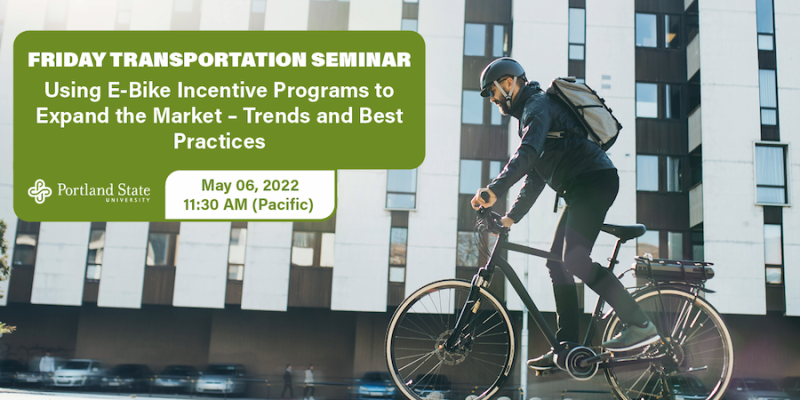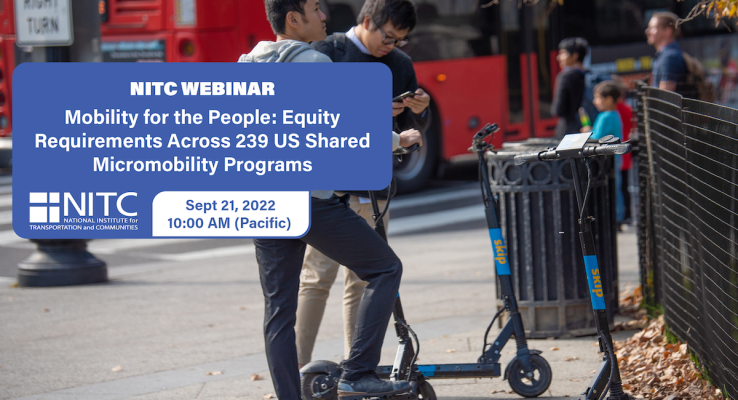Friday Transportation Seminars at Portland State University have been a tradition since 2000. You can join us online or in-person (proof of vaccination required, see below) at 11:30 AM. All presentations are recorded and shared on the event page afterwards.
PRESENTATION ARCHIVE
THE TOPIC
John MacArthur and Cameron Bennett of Portland State University will be presenting the findings and recommendations from their recent white paper "Using E-Bike Incentive Programs to Expand the Market – Trends and Best Practices." This will include a review of the 50+ current, past, and proposed e-bike purchase incentive...
Read more

